Content is now a red ocean (here's what to do next)
in a post AI world
Hello and welcome to this edition,
A lot of people are questioning their content strategy right now. Some of them are even questioning the point of publishing content. Here’s what they are saying:
“Our content strategy is performing worse than in 2024”
“It’s getting harder to get views on LinkedIn”
In order to fix this problem, they’re trying small tweaks. They’re trying new hooks, new formats, or new tricks (like lead magnets). But they won’t succeed until they understand the deeper dynamic that is happening right now.
In this newsletter, I will explain why content is now a red ocean, and what you should do next.
👋 If you want my help with your B2B business, here’s how I can help you;
1. Turn your LinkedIn™ content into qualified leads: My team and I will craft a tailored content strategy, rebrand your profile, and design a signature visual identity that makes you stand out. Your expertise will be transformed into infographics and thought-leadership posts. And beyond content, we’ll help you get inbound and outbound leads.
2. Book a 1-hour power hour with me (1st call is 60% OFF): Limited 1:1 advisory sessions to answer your questions and help with your marketing/content strategy. What past clients say: “Full value, no time wasted, and an expertise I have not seen elsewhere yet. I highly recommend working with him!” “He helped me rethink my business model and refine my offer. Absolutely top-tier. 200% satisfied.”
Before jumping into the future of content, let’s talk about what happened in the past years:
2020 - 2023: The easy growth road for early adopters
At this time, marketers were focusing on growth marketing (cold emails, paid ads, experimentation sprints). Competition in B2B content was low and AI content was not literally everywhere.
When I started in January 2022 (on LinkedIn), it was easier to get 10-15k impressions on LinkedIn with a simple text post on a trending topic. Of course you had to learn copywriting, have unique things to share, and develop your own writing style but overall it was simpler.
Early adopters (like me) used this as a launchpad to grow and create a follower base. But of course, countless creators and brands stopped along the way (probably 90% or more).
2023 - 2024: The golden age of educational content
From 2023 to around 6 months ago, all my growth (on LinkedIn, YouTube, and newsletter) came from educational content. Dense and visually pleasing resources that feel worth saving. I generated millions of impressions with this type of content alongside other creators.
During this period, the competition was high but with a dense and highly valuable educational post, you could get 20,000+ impressions easily. You had to create checklists, lists of tips, workflows, give an opinion, or write a good analysis.
And honestly, I thought until not long ago that we were still in this era. But we’re not. Here’s the new phase we’re entering:
2025 - 20??: The new era of B2B content (red ocean)
I’m still a big fan of educational content but unfortunately, it’s not enough anymore. The reason is quite simple; you can head to ChatGPT and ask for an educational resource tailored to YOUR business case.
So why would someone read or listen to “the 5 layers of a B2B Marketing strategy” while they can ask GPT “give me a marketing plan in 5 layers”.
So why do I qualify it as a “red ocean”?
More competition: there are more businesses and creators producing content but the attention of people remains the same.
More AI content: people are getting tired of AI content (they can spot it from far) and ultimately they are more reluctant to read content in general.
Frameworks overload: millions of people shared frameworks for the past 3 years (including me) and this creates an overdose.
Within this context, you (as a creator or a brand) need to adapt your content strategy. And I’m going to help you do this.
Therefore, you now need a “red ocean content strategy” to adapt to the competition
Content is now a red ocean because there are no entry barriers.
It’s extremely easy to write 30-day worth of content in a few minutes. Does it make it good content? No. But it creates noise in the market that affects even other creators who don’t use AI.
If creating content is extremely easy, then your content strategy should be uncopiable to differentiate yourself
The only way to stand out in this red ocean is to arm yourself with a strong differentiation. I’ve talked a lot about “how to create unique content” and this is even more important than before.
You need to seriously ask yourself this question: Are we just adding more noise to a sea of commoditized content?
The first step to update your content strategy is to audit what you are currently producing. You need to know what to stop, what to start, and what to continue. In order to answer the overarching question (asked above), you can answer 4 sub questions:
Is our content strategy still helping our target audience and ICP?
Is our content unique or can it be found anywhere else?
Are we sharing our unique point of view or just echoing noise?
On which channel are we getting the best results? Which formats?
Make sure your content starts from your day-to-day work, not random theories you read online
Content used to work when creators simply shared what they knew, but with AI providing endless information, that model is outdated. What works now is sharing what you’ve actually done. You need to turn your real experiences into lessons. People learn better when they see insights filtered through your actions.
Apply the 6 new rules of B2B content to distribute (and repurpose) unique content, not commodity
The core idea behind those 6 rules is that content works best when it delivers a unique perspective, is grounded in real experience, stays hyper-specific, reflects your brand, and is delivered in skimmable formats.
Here are the 6 rules to apply:
Rule 1: Share all your content from your unique perspective
Rule 2: Develop a signature point of view grounded in real experimentation
Rule 3: Share what's happening in your business (build in public)
Rule 4: Embody your content in your own personal brand
Rule 6: Use recession-proof formats (infographics + carousels)
Here’s a recap infographic about the evolution of content strategy and how to win after 2025
Alright, that’s the end of this edition! Hope it will help you to update your content strategy!


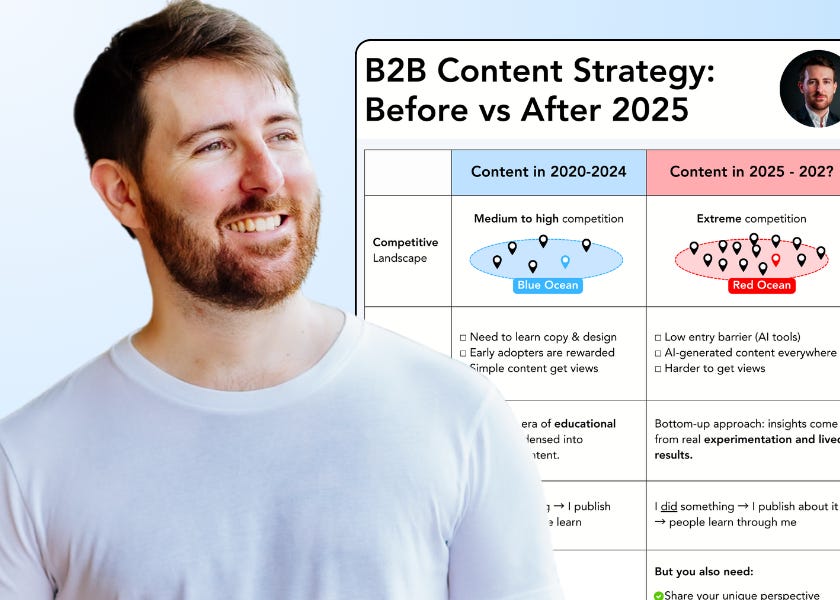

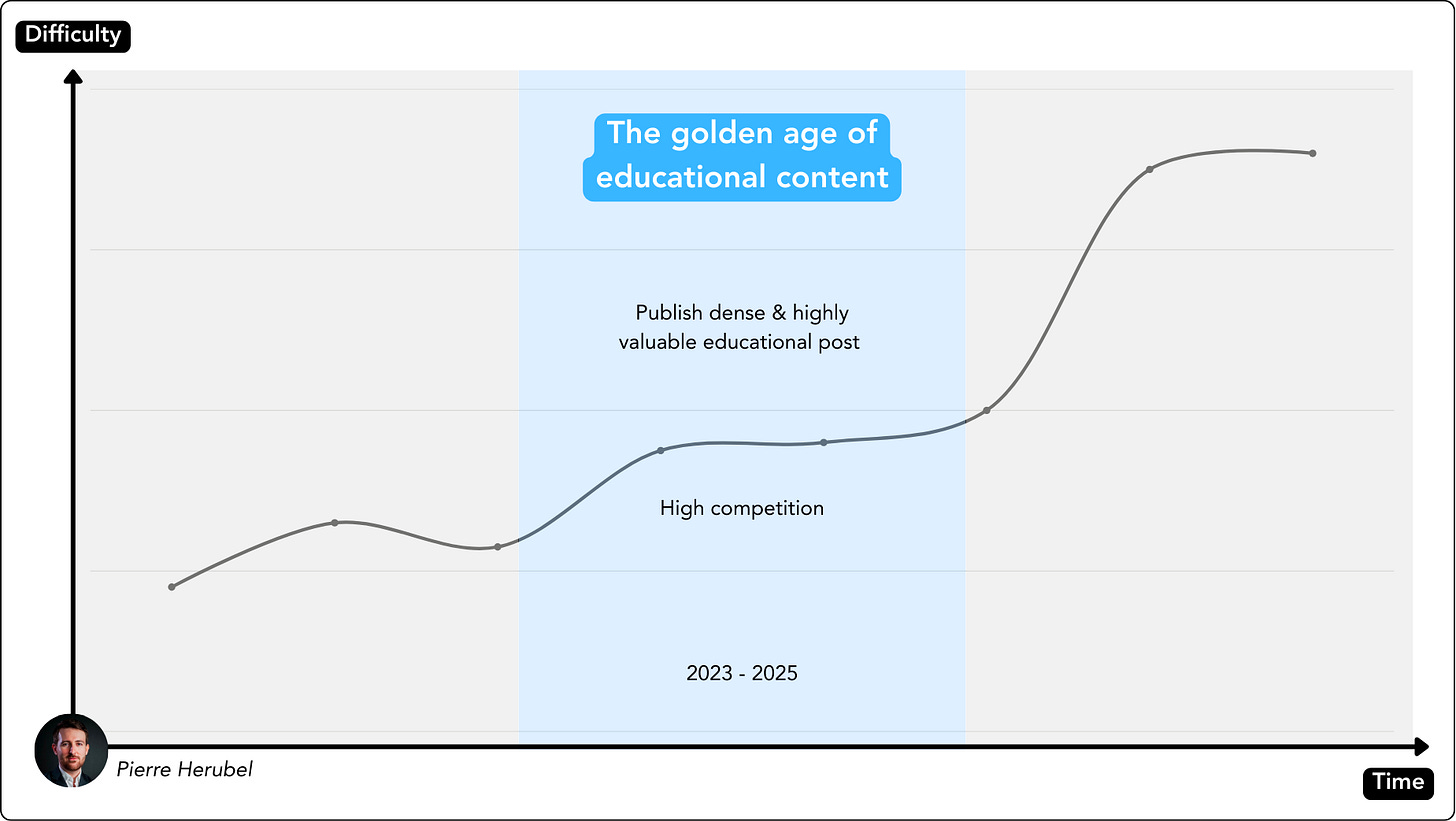

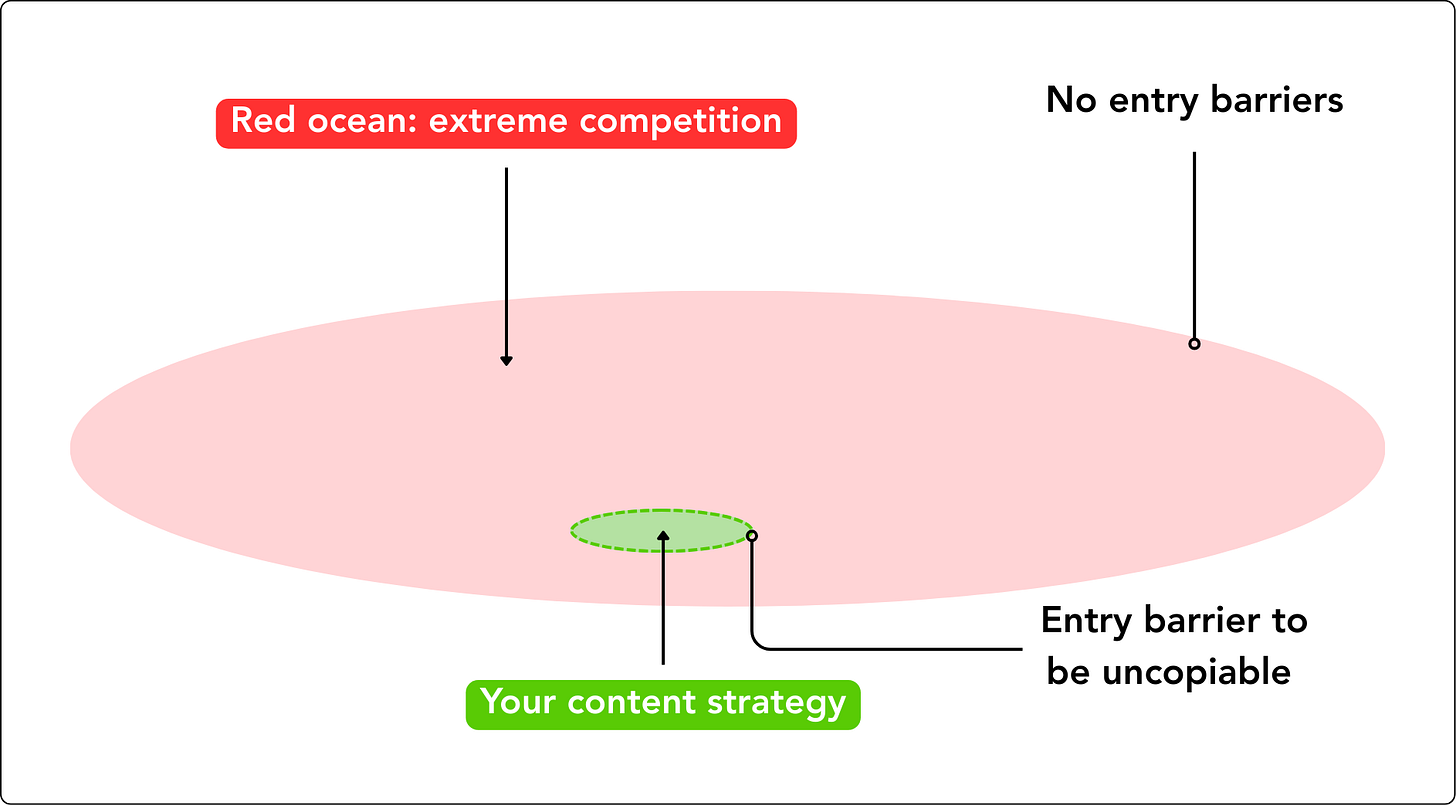


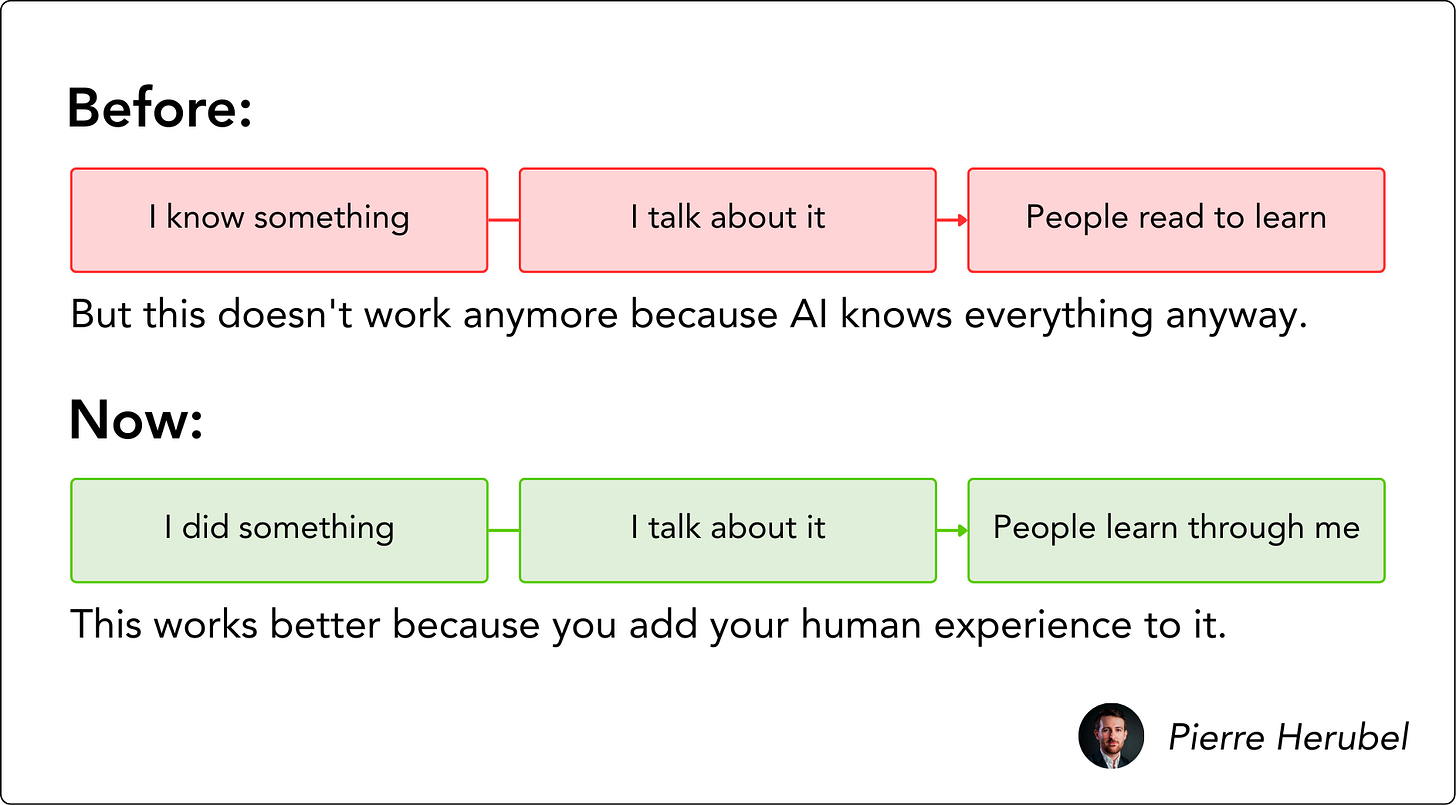
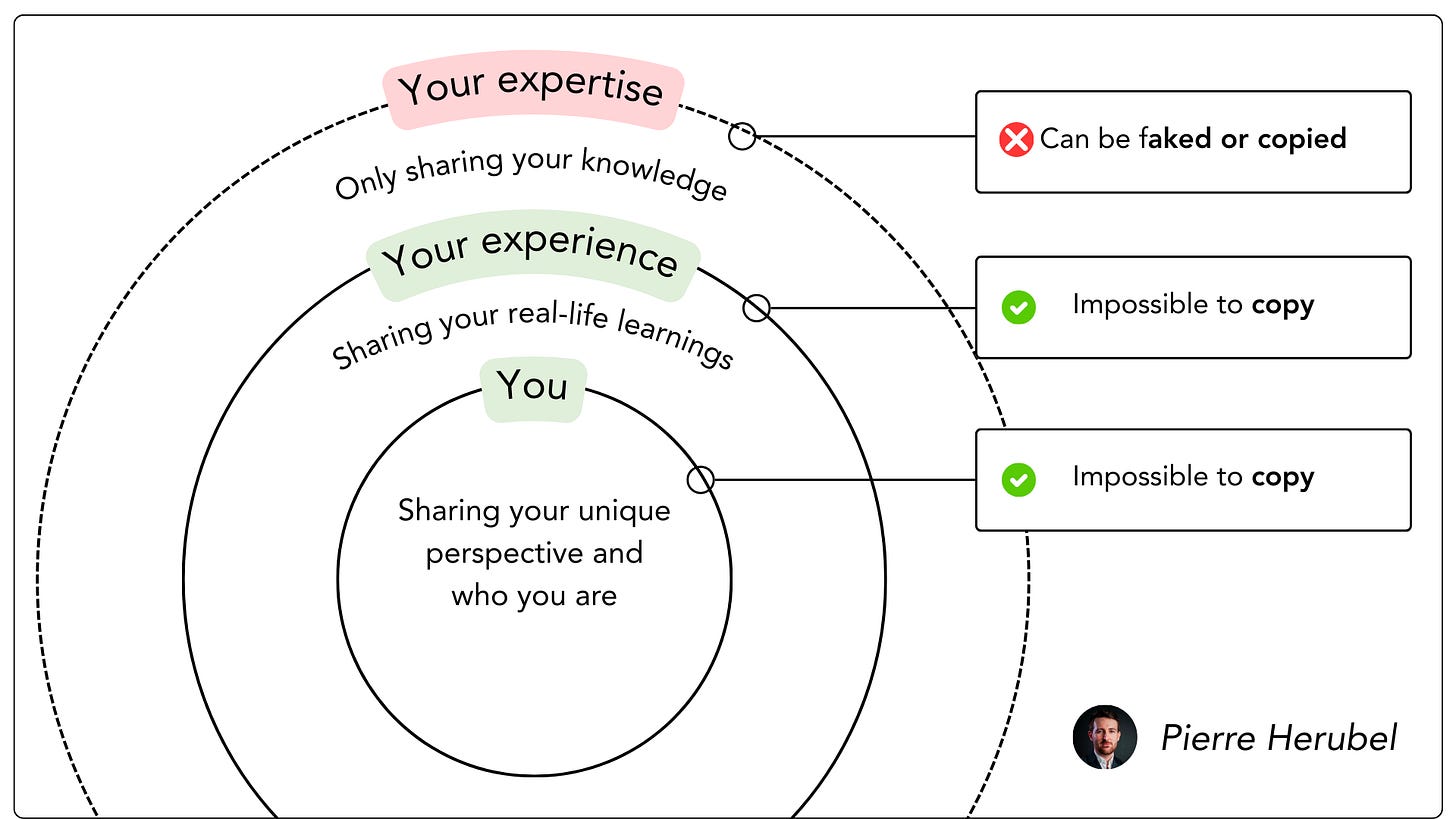

Pierre, this is great. Thank you for sharing. But, what is Rule 5....? I feel I need to know!
I don't disagree, but this could have been written in 2012 or so when it seemed everyone had a blog and social media, Wikipedia, Pinterest, and content farms (e-How, Demand Media, etc.) and article sites and click bait were sucking all the oxygen out of the room and taking up top Google listings. It was the same story then, but it was low quality human written stuff, not AI.